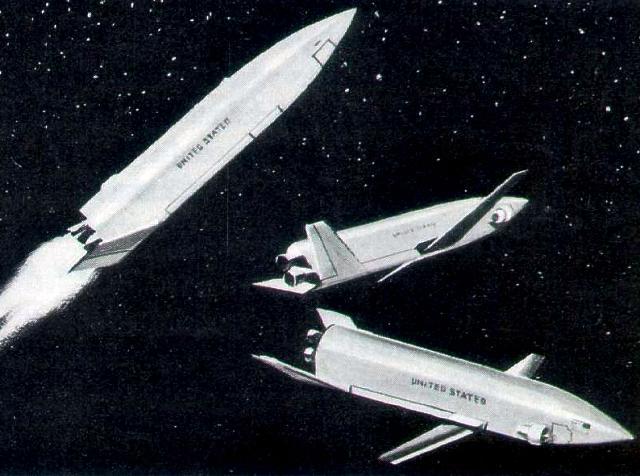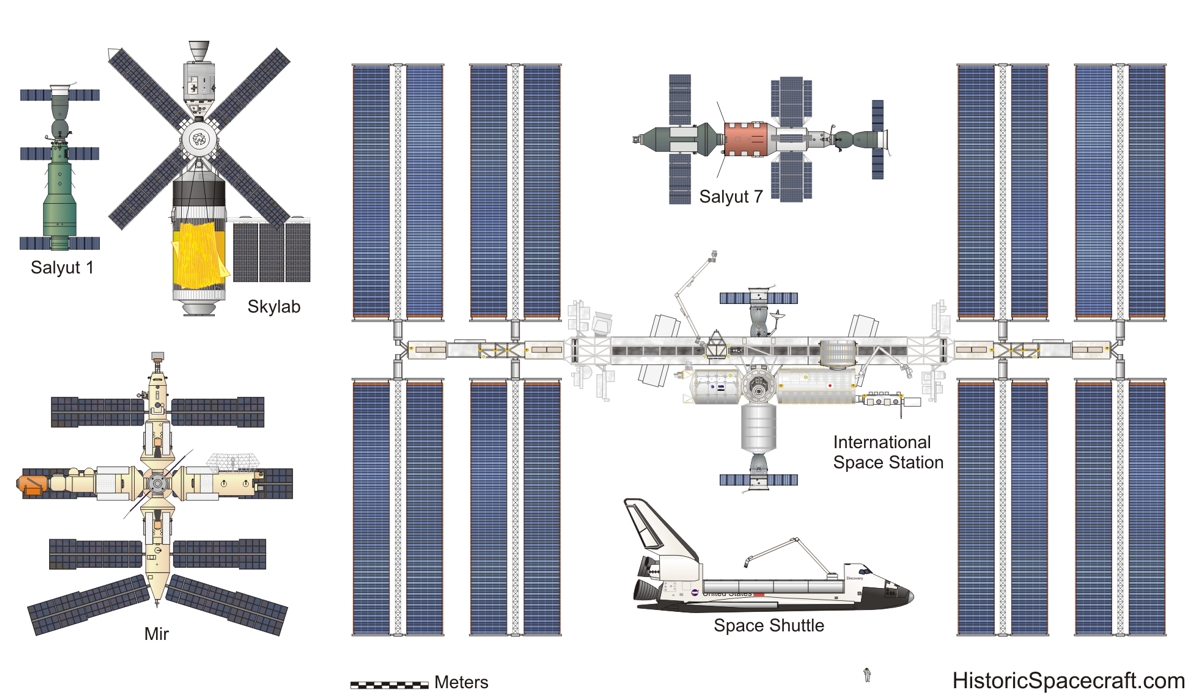Spaceplanes - Cases for and Against
Discussion
There was a bit of a hoo hah a few weeks ago when a NOTAM was issued to all aircraft flying in or around the Cape Canaveral area which indicated that the X-37 was heading back for a landing on the old Shuttle strip. It turned out it was an exercise and the X-37 is still in orbit.
However, you never know, the next landing might very well be at Cape Canaveral.
However, you never know, the next landing might very well be at Cape Canaveral.
I once had a conversation with a proper space boffin about this over 20 years ago, actually he was a highly experienced scientist & I was a sprog engineer so it was a bit one sided. Anyway, the upshot of it was that he felt wings on spacecraft were dead weight and you were far better off doing something like Space X are doing now. I was a bit disappointed because I like spacecraft with wings but I couldn't argue with him as his sums made sense. Cracking bloke, unfortunately now no longer with us on the earth.
Wrt the Space Shuttle, the original design concept had a larger shuttle strapped to it in place of the SRBs and tank that took it to height before separating a bit like White Knight does for Spaceship 1 or 2. Cost & schedule resulted in configuration they ended up with. The original concept would have been totally reusable.
Wrt the Space Shuttle, the original design concept had a larger shuttle strapped to it in place of the SRBs and tank that took it to height before separating a bit like White Knight does for Spaceship 1 or 2. Cost & schedule resulted in configuration they ended up with. The original concept would have been totally reusable.
It would have cost a fortune to develop - probably more than the Saturn V. The flyback booster would have needed a higher thrust setting than a Saturn V as well.
If the orbiter was only intended to carry humans to and from a space station with virtually no cargo carrying capacity, then a fully reusable system might have been feasible.
Once they changed the specification to turn the orbiter into a manned cargo truck, then a flyback booster became just too ambitious.
Here's a picture of the original concept favoured by NASA. This dates from around 1970 -

If the orbiter was only intended to carry humans to and from a space station with virtually no cargo carrying capacity, then a fully reusable system might have been feasible.
Once they changed the specification to turn the orbiter into a manned cargo truck, then a flyback booster became just too ambitious.
Here's a picture of the original concept favoured by NASA. This dates from around 1970 -

Yep, that's the one. Anyone remember Sanger/Horus ? that was a similar concept.
I appreciate the argument about it costing a fortune, however given the complexity and relative unreliability of the STS, could it not have turned out cheaper in the long run. I'm old enough to remember the claims made before the shuttle first flew that it was going to be a "Space Truck" making space flight routine. Tens if not hundreds of flights a year. It never lived up to that. The original concept may just have.
I appreciate the argument about it costing a fortune, however given the complexity and relative unreliability of the STS, could it not have turned out cheaper in the long run. I'm old enough to remember the claims made before the shuttle first flew that it was going to be a "Space Truck" making space flight routine. Tens if not hundreds of flights a year. It never lived up to that. The original concept may just have.
It was all about allowed budgets.
For the first time in NASA's history of manned spaceflight programmes, they were given a fixed budget by the Office of Budget Management (run at the time by Casper Weinberger) limiting development costs to $10 billion. They were also not allowed any increases due to inflation - which, I'm sure you know, was a tough restriction at the time because inflation rates between 1973 and 1976 were often over 20%.
This, in effect, meant that the $10 billion they were allocated was shrinking by almost 1/4 every year for about three of the years of maximum development costs. That was a real body blow.
It was the approval of the very restricted budget that more or less killed a fully reusable system stone dead. NASA had estimated the development costs of a fully reusable system would be around $20 to $30 billion (more than Apollo) so they were never going to get that type of money.
It is true that, if a reliable fully reusable system had been used, operational costs would, in theory, have been cheaper. However, as was discovered during the actual Shuttle operations, making high energy liquid fuelled rocket engines reusable turned out to be very difficult and expensive and tougher than NASA envisaged in 1971 when they were looking at fully reusable systems.
So, I expect the savings in operational costs of a fully reusable system my not have been as great as originally thought.
For the first time in NASA's history of manned spaceflight programmes, they were given a fixed budget by the Office of Budget Management (run at the time by Casper Weinberger) limiting development costs to $10 billion. They were also not allowed any increases due to inflation - which, I'm sure you know, was a tough restriction at the time because inflation rates between 1973 and 1976 were often over 20%.
This, in effect, meant that the $10 billion they were allocated was shrinking by almost 1/4 every year for about three of the years of maximum development costs. That was a real body blow.
It was the approval of the very restricted budget that more or less killed a fully reusable system stone dead. NASA had estimated the development costs of a fully reusable system would be around $20 to $30 billion (more than Apollo) so they were never going to get that type of money.
It is true that, if a reliable fully reusable system had been used, operational costs would, in theory, have been cheaper. However, as was discovered during the actual Shuttle operations, making high energy liquid fuelled rocket engines reusable turned out to be very difficult and expensive and tougher than NASA envisaged in 1971 when they were looking at fully reusable systems.
So, I expect the savings in operational costs of a fully reusable system my not have been as great as originally thought.
Tempest_5 said:
Yep, that's the one. Anyone remember Sanger/Horus ? that was a similar concept.
Also of course the BAC Mustard project.
I did read that out of the $500 million cost of each Shuttle mission, the fuel bill came to around $2 million. So the energy itself isn't all that expensive, I can see the attraction of a reusable set of engines and tanks even if it is more complex.
As for the shuttle's retrieval capability there were two problems.
First of all the Shuttle never struggled up beyond about 400 miles, usually half that. Most satellites are in geostationary orbits at 23,000 miles.
More importantly even if one could be retrieved the cost of launching a rocket or shuttle is a significant proportion of the total cost of putting a satellite up. Retrieving repairing and relaunching a satellite is unlikely to be cost effective compared with buying a new one with no doubt improved technology and launching it once.
Satellite retrieval had never been in NASA's original justification for the Shuttle. Indeed, as I said earlier, its original mission was to simply ferry people and some small loads of equipment to a space station.
Once the space station was axed, NASA had to try and create uses for the Shuttle - as it was the only programme they were being allowed.
Eventually, in order to justify their meaness when it came to funding Shuttle development, Congress decreed that the Shuttle would be the US's ONLY launcher and that all unmanned throwaway rockets would be retired.
The Challenger accident brought an end to all that nonsense as it became blindingly obvious that being 100% dependent on the Shuttle was utter madness and a massive risk - especially for military operations.
Once the space station was axed, NASA had to try and create uses for the Shuttle - as it was the only programme they were being allowed.
Eventually, in order to justify their meaness when it came to funding Shuttle development, Congress decreed that the Shuttle would be the US's ONLY launcher and that all unmanned throwaway rockets would be retired.
The Challenger accident brought an end to all that nonsense as it became blindingly obvious that being 100% dependent on the Shuttle was utter madness and a massive risk - especially for military operations.
Eric Mc said:
Satellite retrieval had never been in NASA's original justification for the Shuttle. Indeed, as I said earlier, its original mission was to simply ferry people and some small loads of equipment to a space station.
Once the space station was axed, NASA had to try and create uses for the Shuttle - as it was the only programme they were being allowed.
Once the space station was axed, NASA had to try and create uses for the Shuttle - as it was the only programme they were being allowed.

Tempest_5 said:
...he felt wings on spacecraft were dead weight and you were far better off doing something like Space X are doing now...
A familiar argument to those of us who have read 'Frontiers of Space' by Gatland and Bono.The pic below is from that book, and illustrates three designs with the same 2.8 tonne payload - at the left is a ballistic vehicle with a plug nozzle engine which also serves as a heatshield, middle is a lifting body re-entry vehicle and winged booster, and at the right is a winged orbiter.

The ballistic vehicle works out much cheaper overall
Eric Mc said:
Once the space station was axed, NASA had to try and create uses for the Shuttle - as it was the only programme they were being allowed.
Sorry for going OT Eric, what was the name of NASA's space station programme? I tried googling it, but that just returns stuff about ISS.The original 1969 proposed Space Station was never given a name because it was shot down by Congress within months of its announcement.
Apart from the stop-gap Skylab project, which actually did fly between 1973 and 1974, the next proposed space station was "Freedom" which was announced by Ronald Reagan in 1984.
Like so much of NASA's post Apollo projects, it struggled to elicit adequate funding from Congress and dragged on as a paper project for a decade through numerous changes, design rewrites etc. It only finally got proper approval when NASA realised the best way forward was to get international partners on board - chiefly the Europeans, the Japanese and, following the end of the Soviet Union, the Russians.
It was at this point that the programme morphed into the International Space Station (ISS).
Apart from the stop-gap Skylab project, which actually did fly between 1973 and 1974, the next proposed space station was "Freedom" which was announced by Ronald Reagan in 1984.
Like so much of NASA's post Apollo projects, it struggled to elicit adequate funding from Congress and dragged on as a paper project for a decade through numerous changes, design rewrites etc. It only finally got proper approval when NASA realised the best way forward was to get international partners on board - chiefly the Europeans, the Japanese and, following the end of the Soviet Union, the Russians.
It was at this point that the programme morphed into the International Space Station (ISS).
I always remember them running around the exercise track in Skylab.
https://www.youtube.com/watch?v=d1sr6aVzW9M
What the ISS crew would give for that I wonder.
https://www.youtube.com/watch?v=d1sr6aVzW9M
What the ISS crew would give for that I wonder.
Ha, that's great. Another example of science fiction influencing real life.
https://www.youtube.com/watch?v=1wJQ5UrAsIY
https://www.youtube.com/watch?v=1wJQ5UrAsIY
Gassing Station | Science! | Top of Page | What's New | My Stuff









